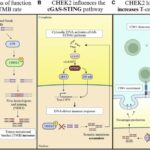![The SamuxMP mass photometer for AAV analytics is used for characterizing the US Pharmacopeia’s new adeno-associated virus (AAV) reference standards. [Refeyn]](https://www.genengnews.com/wp-content/uploads/2025/06/2503REF18Jun-Mass-Photometry-recognized-by-US-Pharmacopeia_Refeyn-SamuxMP-instrument-1024x576.jpg)
The SamuxMP mass photometer for AAV analytics is used for characterizing the US Pharmacopeia’s new adeno-associated virus (AAV) reference standards. [Refeyn]
The U.S. Pharmacopeia (USP) has recognized mass photometry as a key orthogonal method for characterizing its new adeno-associated virus (AAV) reference standards, as referenced in the draft general chapter <1067>, according to Refeyn. USP recently released new standards for measuring empty and full AAV capsids using five different methods from a comprehensive multi-laboratory study.
AAVs play a key role in delivering gene therapies, and precise measurement of the empty/full capsid ratio—a critical quality attribute (CQA)—is crucial for developers and manufacturers of AAV-based gene therapies to ensure product safety and efficacy, says Gabriella Kiss, market development director at Refeyn. Until now, there has been a lack of method harmonization and physical standards to support accurate quantitation of full and empty capsids, she adds, pointing out that USP has addressed this challenge with the launch of a solutions package to help AAV manufacturers standardize their quality assessment and control.
Collaboration among scientists
Developed in collaboration with scientists across multiple laboratories, USP’s new AAV standards tackle the essential need for consistency and reliability in AAV assessments, according to Kiss. Mass photometry was used alongside SEC-MALS, AUC, UV-vis, and CD-MS to characterize USP’s new AAV8 (Empty Capsids) and AAV8 (Full Capsids) reference standards and is now included in USP’s Gene Therapy Analytical Guide, she notes.
Mass photometry is also specifically referenced in the new USP general chapter <1067>, “Best Practices for the Manufacture and Quality Control of Recombinant Adeno-Associated Virus Gene Therapy Products,” which is currently open for public comment. The chapter highlights mass photometry—alongside AUC and TEM—as an orthogonal method capable of distinguishing between empty, full, and also notably partially filled capsids. It recommends using multiple orthogonal techniques for accurate capsid assessment.
A recent webinar presented by scientists from the USP and Pharmaron Biologics discussed the need for best practices and test methods that are harmonized for AAV testing from raw material qualification through to product release. This includes insight into the new USP standards to support AAV quality testing and analytical characterization of AAV content utilizing mass photometry and orthogonal techniques. The Pharmaron scientists also highlighted how they use mass photometry for AAV capsid optimization.
To view the webinar “USP standards for AAV testing and characterization using mass photometry,” click here.


